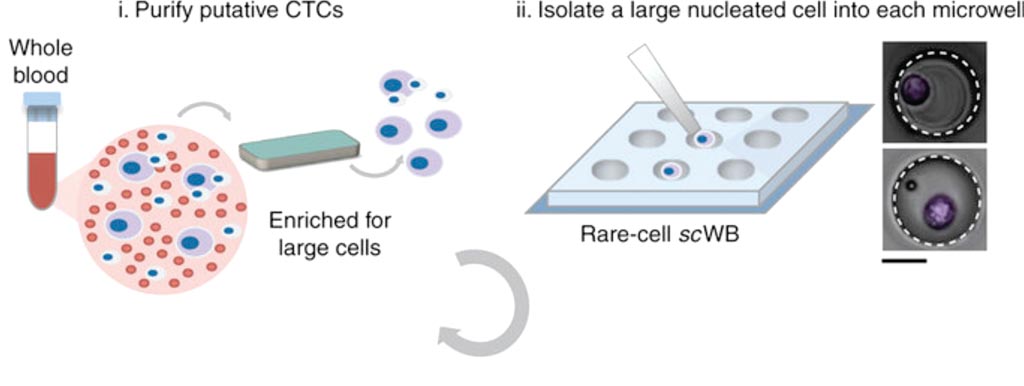CTC Protein Expression Uses Microfluidic Western Blotting
By LabMedica International staff writers
Posted on 06 Apr 2017
Circulating tumor cells (CTCs) are rare tumor cells found in the circulatory system of certain cancer patients and the clinical and functional significance of CTCs is still under investigation.Posted on 06 Apr 2017
Circulating tumor cells have been isolated from the blood of breast cancer patients and, then microscale physics has been used to design a precision test for protein biomarkers, which are indicators of cancer.

Image: Microfluidic rare-cell workflow for multiplexed western blotting of single patient-derived CTCs (Photo courtesy of University of California – Berkeley).
Scientists at the University of California – Berkeley recruited 12 patients with advanced breast cancer and blood was drawn and processed with in five hours after collection. White blood cells were prepared by lysing the red blood cells. Single-cell resolution western blots (scWB) were used to measure a panel of proteins in single CTCs isolated from patients with primary estrogen receptor-positive (ER+) breast cancer.
A commercially available microfluidic tool was used for label-free isolation of circulating cancer cells in both the cell line spiking and cancer patient blood experiments. Flow cytometry analysis was performed and cells were analyzed on a Guava flow cytometer.
The scientists found that the precision handling and analysis revealed a capacity to assay sparingly available patient-derived CTCs, a biophysical CTC phenotype more lysis-resistant than breast cancer cell lines. A capacity to report protein expression was demonstrated on a per CTC basis and two statistically distinct glyceraldehyde 3-phosphate dehydrogenase (GAPDH) subpopulations within the patient-derived CTCs. By sorting and probing the protein targets, the test is more selective than existing pathology tools. Enhanced selectivity will be crucial in detecting subtle chemical modifications to biomarkers that can be important but difficult to measure.
Amy E. Herr, PhD, a professor and senior author of the study said, “Microfluidic design was key in this study. We were able to integrate features needed for each measurement stage into one process. Systems integration allowed us to do every single measurement step very, very quickly while the biomarkers are still concentrated. If not performed exceptionally fast, the cell's proteins diffuse away and become undetectable.” The study was published on March 23, 2017, in the journal Nature Communications.














